Posts Tagged: pests
In Drinking Your Cup of Joe, Do You Ever Think About Coffee Plantation Pests?
When you're drinking your daily cup of Joe to power your day, do you ever think about coffee plantation pests, such as the coffee borer beetle, aka...
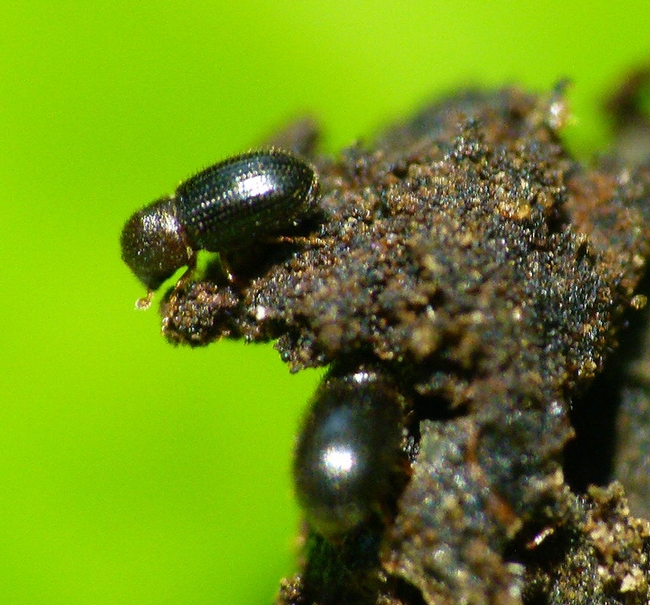
The coffee borer beetle, also known as the coffee berry borer, Hypothenemus hampei. (Courtesy of L. Shyamal, Wikipedia)
Bohart Museum Virtual Open House: Think Pests of Alfalfa and Rice
Mark your calendar. The Bohart Museum of Entomology at the University of California, Davis, is hosting a virtual open house dealing with...
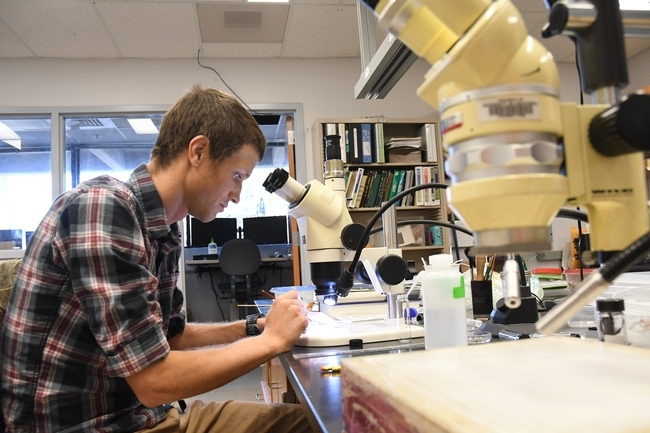
Cooperative Extension specialist Ian Grettenberger at work in his lab at UC Davis. (Photo by Kathy Keatley Garvey)
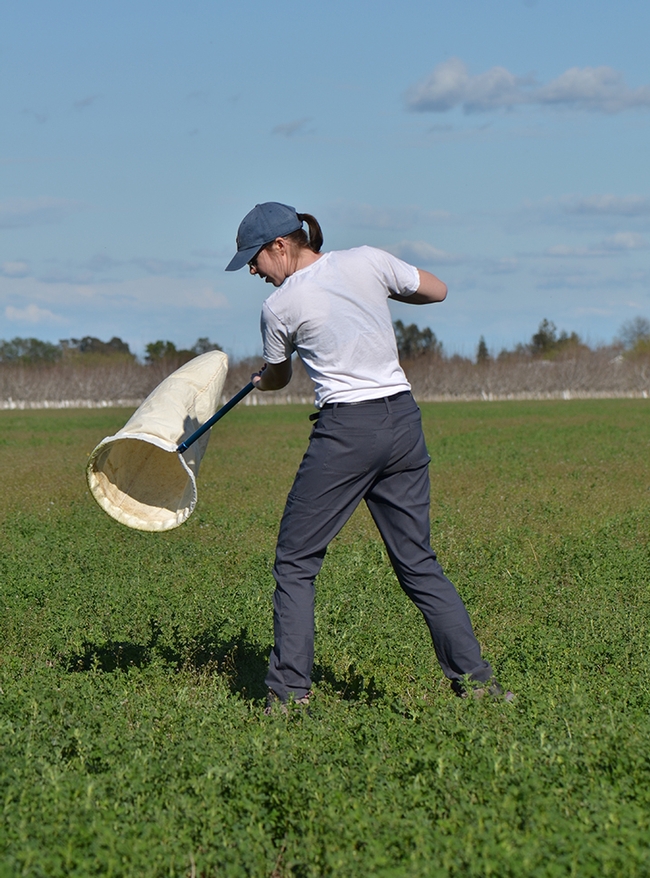
Graduate student Madi Hendrick sweeping an alfalfa field for pests.
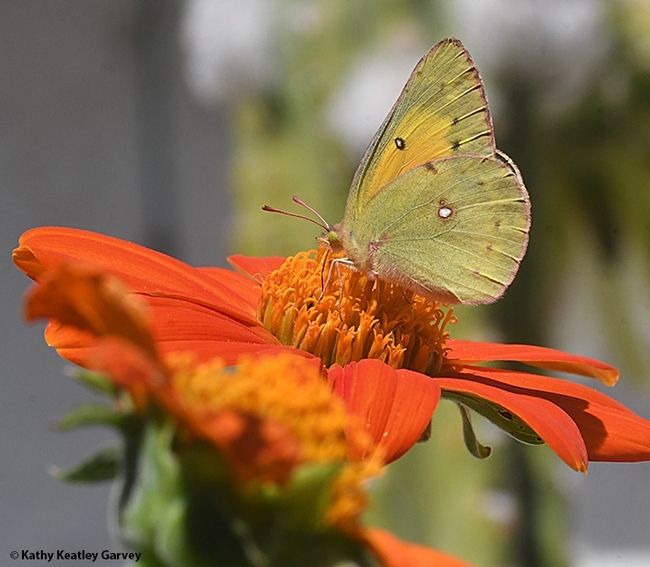
In its adult form, the alfalfa butterfly is attractive. In its larval form, it's a pest of alfalfa. (Photo by Kathy Keatley Garvey)
A Monarch Paradise in July
Monarchs, bless their little hearts, souls and wings, deposited 16 eggs on our milkweed plants in July. Being quite obliging and considerate,...
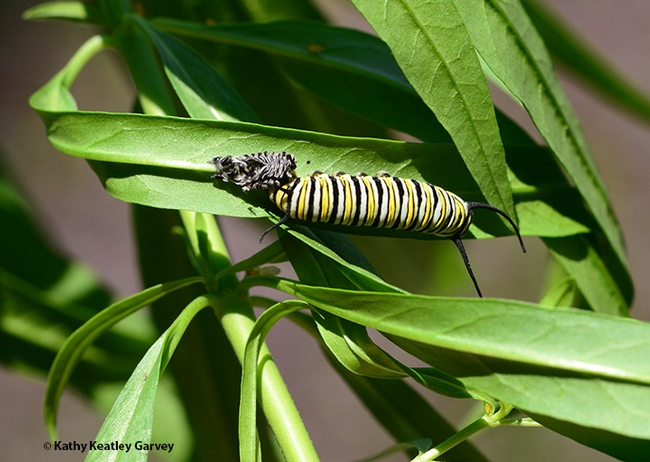
A monarch caterpillar molting. (Photo by Kathy Keatley Garvey)
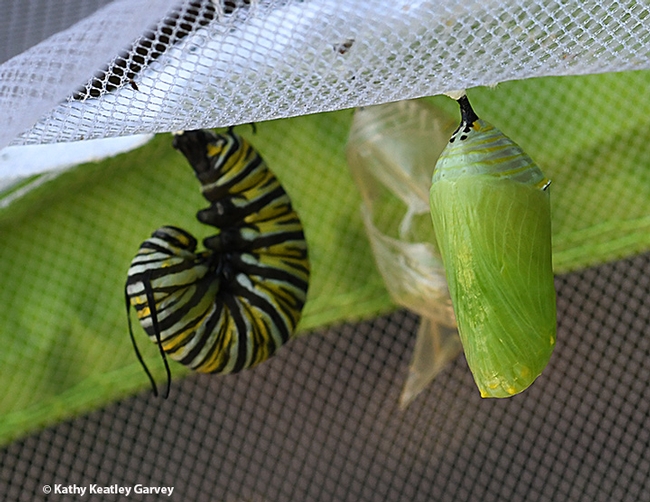
A monarch caterpillar j'ing; soon it will be a chrysalis. (Photo by Kathy Keatley Garvey)
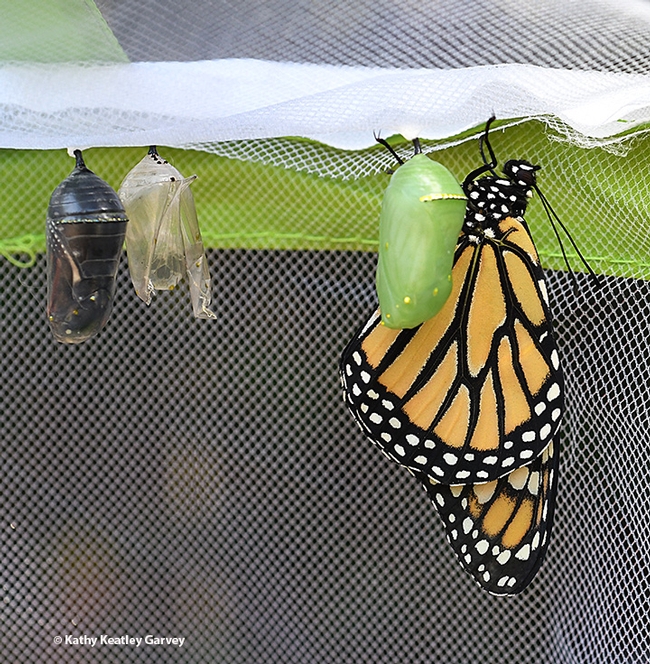
From left, a chrysalis about to release a monarch; an empty chrysalis or empty pupal exoskeleton, exuvia; a chrysalis; and an newly eclosed adult monarch. (Photo by Kathy Keatley Garvey)
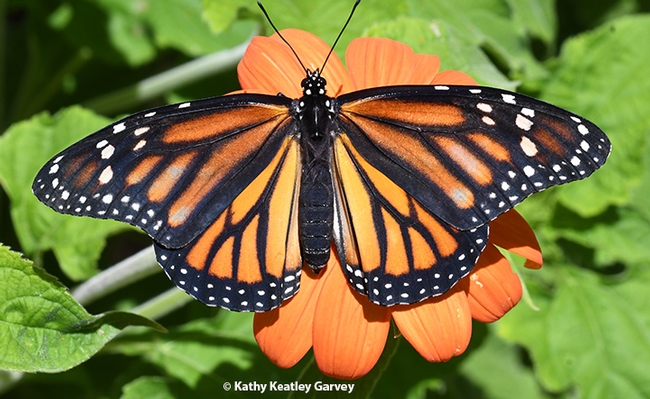
A newly eclosed female monarch on a Mexican sunflower, Tithonia. (Photo by Kathy Keatley Garvey)
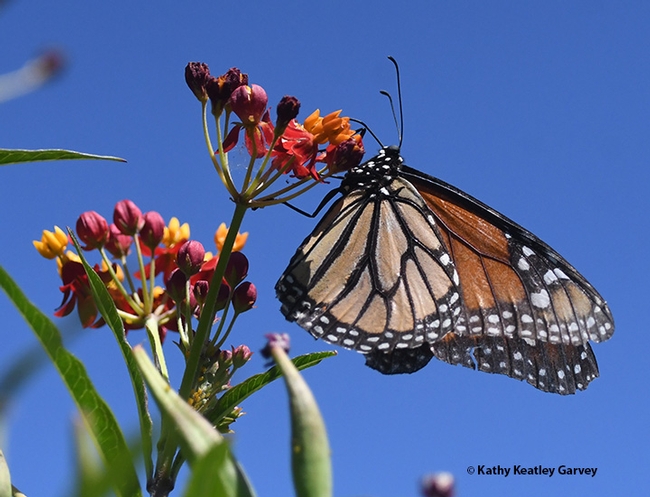
A female monarch nectaring on a tropical milkweed. This milkweed yielded five caterpillars. (Photo by Kathy Keatley Garvey)
Ian Grettenberger Targets a Variety of Pests
(Editor's Note: In the midst of the coronavirus pandemic precautions--when facilities are closing down--we're taking time to spotlight some of our UC...
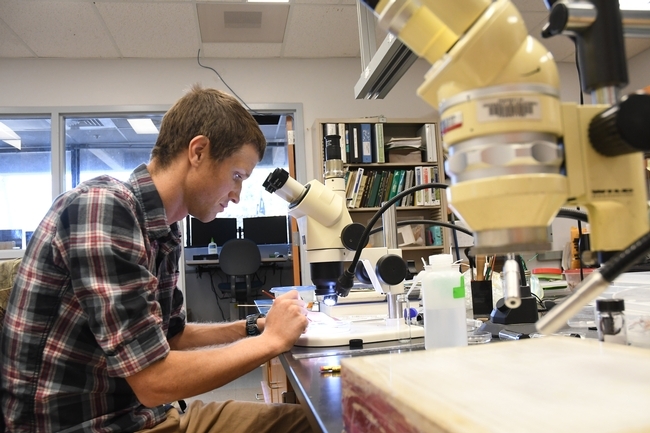
Agricultural entomologist and Cooperative Extension specialist Ian Grettenberger joined the faculty of the UC Davis Department of Entomology and Entomology in January 2019. (Photo by Kathy Keatley Garvey)

Agricultural entomologist and Cooperative Extension specialist Ian Grettenberger in his office in Briggs Hall, UC Davis. (Photo by Kathy Keatley Garvey)
California trees are suffering under climate change and invasive pests
“There are lots of invasive pests everywhere because of global warming and the movement of plant materials in general,” said Philippe Rolshausen, UC Cooperative Extension subtropical tree specialist at UC Riverside.
Yellowing leaves, a thinning canopy and branch die-back are symptoms that the tree is sick. UC Master Gardeners, headquartered in UCCE county offices across the state, can provide free help, the article said.
Marantos listed possible reasons for common tree symptoms:
Yellow leaves: May be due to a lack of nutrients. A sudden jolt of fertilizer isn't the best solution. Homeowners often remove the best fertilizer and mulch for trees — their own fallen leaves.
Thinning canopies and branch die-back: May be the result of a soil-born disease, such a phytophthora, caused by excessive water. “Homeowners have a tendency to over-irrigate a tree that's not doing well, but soil-borne diseases actually thrive in wet soils, so that's making things even worse,” Rolshausen said. “Trees don't like standing water on their root systems because they can't breathe.”
Huanglongbing of citrus: Invested trees send up shoots of bright yellow leaves. Eventually, new leaves get twisted and mottled and the fruit stops ripening. The disease was first spotted in Southern California in the late 1990s and has since been detected in Los Angeles, Orange, San Bernardino and Riverside counties, according to a map prepared by University of California Agriculture and Natural Resources.
The Times article also recommended the UC Integrated Pest Management Program website to learn how to diagnose and control tree insects and diseases.


